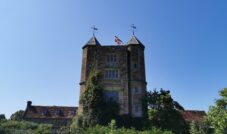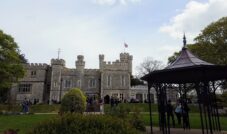My photos of Dover Castle
Dover Castle is one of my favourite English Heritage sites in Kent. Not only was it a joy to photograph, it’s storied history is fascinating. See all of my photos and learn about the interesting history, facts and things to see at Dover Castle.
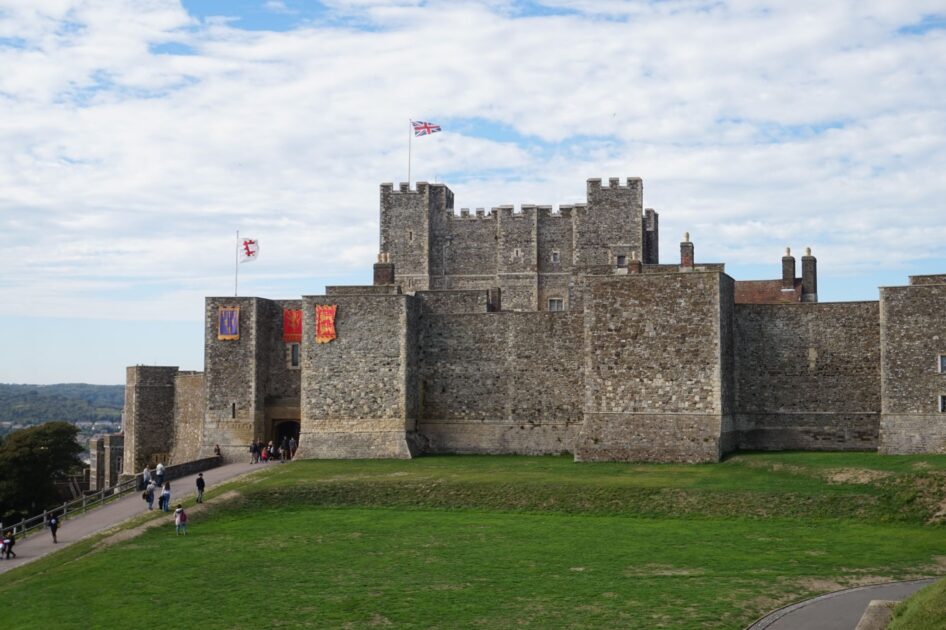
Dover Castle History, Facts and Timeline
Here are the interesting facts about Dover Castle’s construction and stories throughout of the decades.
1st Century: Roman Lighthouse
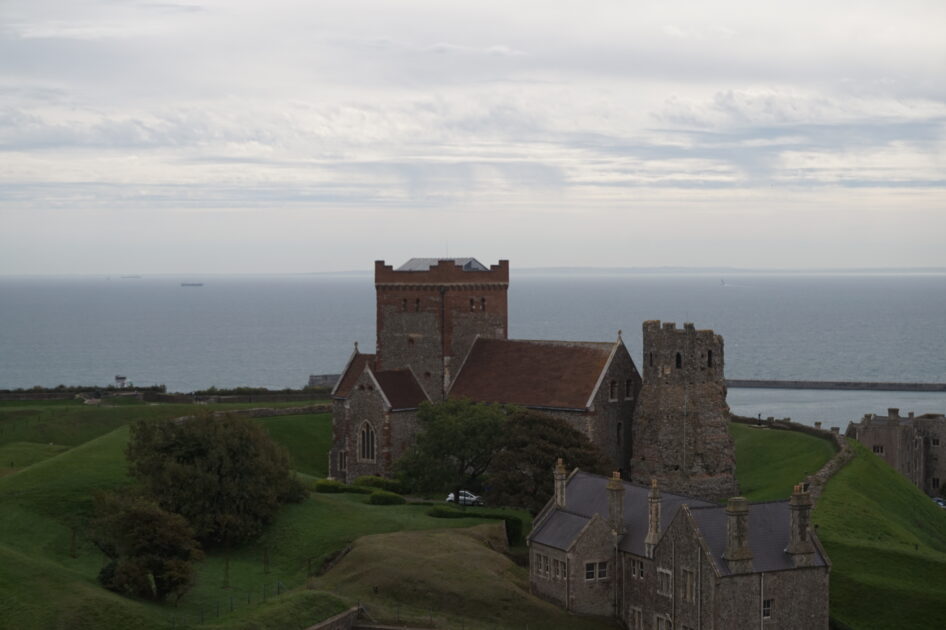
Nestled within the grounds of Dover Castle lies a remarkable piece of history—a Roman lighthouse. This ancient structure serves as a tangible link to Dover’s Roman past when the site was known as Portus Dubris. The Romans, recognizing the strategic value of the location as a port, established a network of fortifications, including the iconic lighthouse.
The Roman lighthouse, often referred to as the Pharos, stands as a silent sentinel overlooking the English Channel. Its construction dates back to the 1st century AD, making it one of the earliest examples of its kind in Britain. The lighthouse played a crucial role in guiding ships safely to the Roman port, aiding navigation in the treacherous waters.
The presence of the Roman lighthouse within the castle grounds not only attests to Dover’s ancient maritime importance but also underscores the continuity of the site’s strategic significance over the centuries. Visitors can marvel at this ancient structure, imagining the countless ships guided by its beacon through the waters of the English Channel.
11th Century: Norman Conquest and Foundation (1066-1086)
Dover Castle stands as a testament to the enduring legacy of medieval architecture, earning its reputation as one of the oldest standing castles in England. Its origins trace back to the aftermath of the Norman Conquest in 1066 when William the Conqueror recognized the strategic significance of the site. The construction marked a departure from traditional wooden fortifications, emphasizing the durability of stone structures. The castle’s initial purpose was to serve as a formidable defensive outpost against potential invaders approaching from the English Channel.
13th Century: French Occupation (1216-1224)
In the early 13th century, Dover Castle faced a challenging chapter in its history when it fell under French occupation during the reign of King John. The period of occupation, spanning from 1216 to 1224, occurred during the First Barons’ War, a conflict between King John and his barons.
The French forces, led by Prince Louis (later King Louis VIII of France), seized control of Dover Castle, marking a significant threat to English sovereignty. The castle’s strategic position as a gateway to England made it a coveted prize during the tumultuous period of conflict.
The occupation of Dover Castle highlighted the vulnerability of even the most formidable fortresses during times of political turmoil. The eventual recovery of the castle by English forces emphasized its enduring significance and resilience in the face of external threats. The episode remains a pivotal moment in Dover Castle’s history, showcasing the ebb and flow of power during the medieval era.
13th Century: Henry III’s Royal Residence (1216-1272)
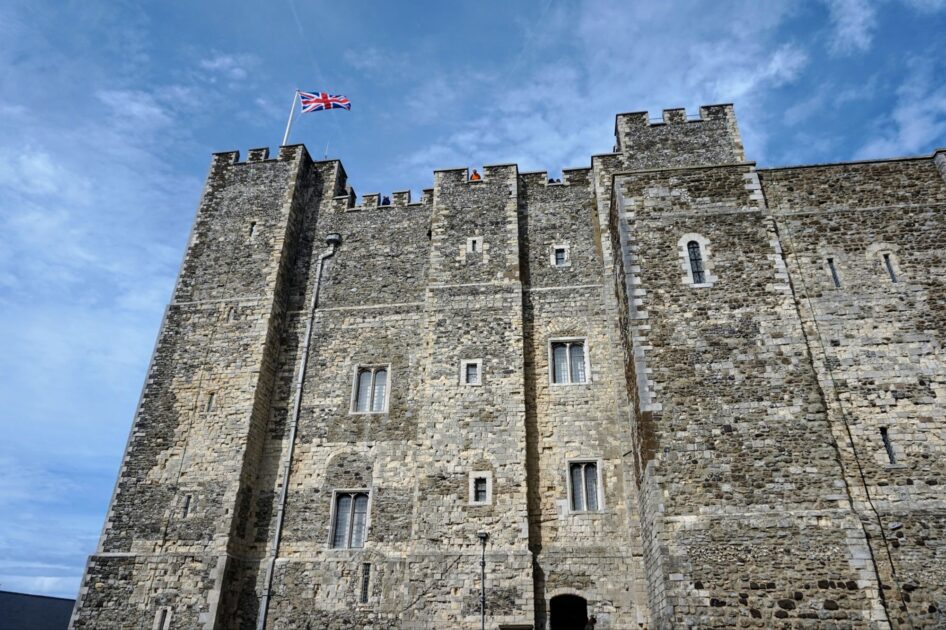
King Henry III’s influence on Dover Castle during the 13th century extended beyond military fortifications. Under his reign, the castle underwent a transformation into a royal residence, with the construction of the magnificent Great Tower.
The Great Tower, also known as the medieval palace, became a symbol of Henry III’s vision for Dover Castle as more than just a military stronghold. Lavishly decorated chambers within the tower reflected the opulence and grandeur of royal life. The King’s Bedchamber, adorned with rich textiles and furnishings, showcased the comforts afforded to the medieval monarchy.
Henry III’s decision to establish a royal residence at Dover Castle emphasized the site’s strategic importance not only for defence but also as a symbol of royal power. Visitors today can explore the well-preserved chambers of the Great Tower, stepping back in time to an era when Dover Castle served as a residence fit for a king.
20th Century: World War II and the Secret Wartime Tunnels (1939-1945)
Beneath the imposing structure of Dover Castle lies a network of medieval tunnels, offering a captivating journey into the challenges and intricacies of medieval warfare. These subterranean passages, dating back to the medieval period, served a crucial defensive function during times of siege.
The medieval tunnels provided a means for soldiers to move covertly within the castle, offering strategic advantages during times of conflict. The architecture of the tunnels reflects the ingenuity of medieval military engineers, who designed spaces for storage, living quarters, and even features like murder holes for defensive purposes.
Visitors to Dover Castle can now explore these medieval tunnels, gaining insights into the harsh realities faced by defenders during sieges. The immersive experience includes interactive exhibits, bringing to life the tense atmosphere of medieval conflict. As visitors traverse the underground labyrinth, they become witnesses to the strategic adaptations that fortified Dover Castle against potential invaders.
You might be interested in…
Must See Attractions At Dover Castle
Secret Wartime Tunnels
Descend into the atmospheric Secret Wartime Tunnels, a pivotal hub during World War II. Immersed in the strategic importance of the tunnels, visitors can witness the nerve centre where Operation Dynamo was orchestrated, successfully evacuating Allied troops from Dunkirk in 1940. The immersive audio-visual displays recreate the tension of those dark days and provide a gripping insight into the role Dover Castle played in shaping history. Read how Chislehurst Caves also played an important role during World War II.
Medieval Royal Palace
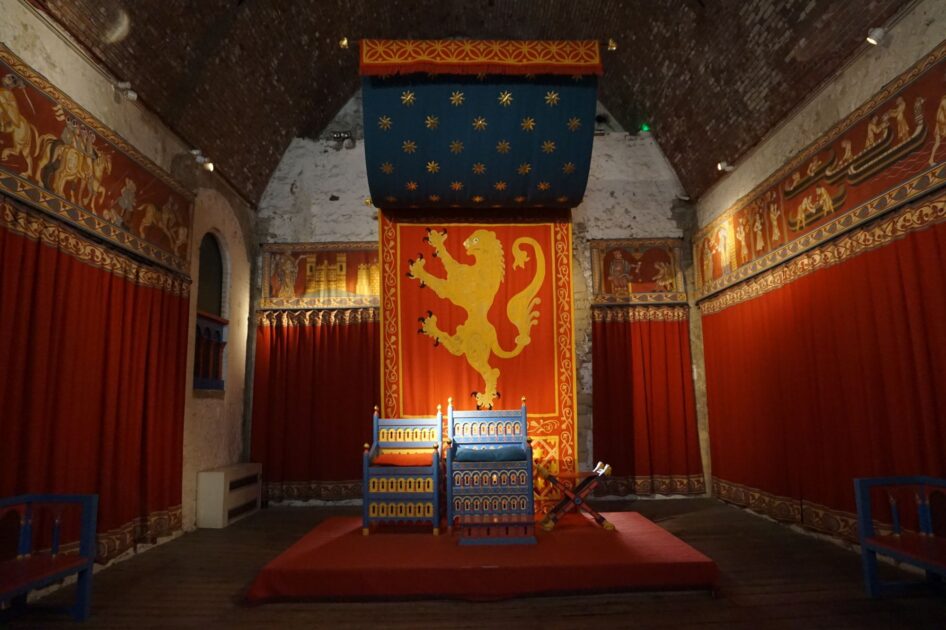
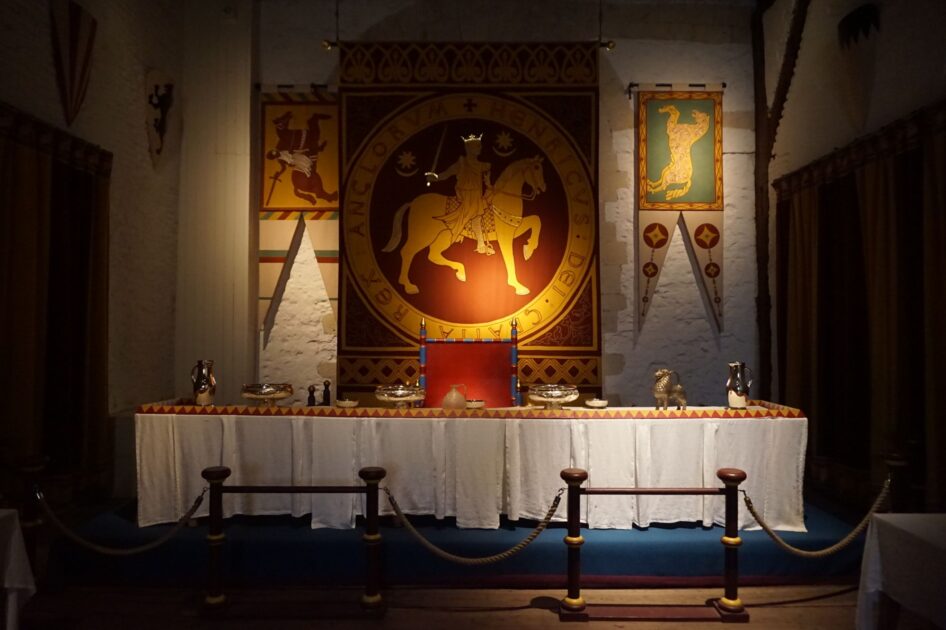
Marvel at the grandeur of the Medieval Royal Palace, a picturesque structure nestled within the castle grounds. The palace showcases the lavish lifestyle of medieval royalty, adorned with intricately designed tapestries and furniture. Visitors can wander through the Great Hall and experience the regal ambiance of banquets and courtly life.
Roman Lighthouse
Venture into the Roman Lighthouse, an ancient structure that predates the castle itself. This remarkable beacon, standing tall since the 1st century AD, offers panoramic views of the English Channel and the surrounding landscape. Gain insight into the Roman era and appreciate the engineering marvel that guided seafarers in antiquity.
Princess of Wales’s Royal Regiment Museum
For a deeper understanding of the castle’s military history, explore the Princess of Wales’s Royal Regiment Museum. Exhibits narrate the stories of the soldiers who served within these historic walls, from medieval knights to contemporary military personnel. Engaging displays and artifacts provide a comprehensive overview of Dover Castle’s enduring role in national defence.
The Great Siege Experience
Step back in time and relive the dramatic events of the Great Siege of 1216. The interactive Great Siege Experience brings history to life through multimedia presentations, allowing visitors to witness the castle’s resilience during this pivotal moment. Experience the chaos and intensity of the medieval siege, gaining a profound appreciation for the castle’s strategic importance.
Anglo-Saxon Church and Saxon Earthworks
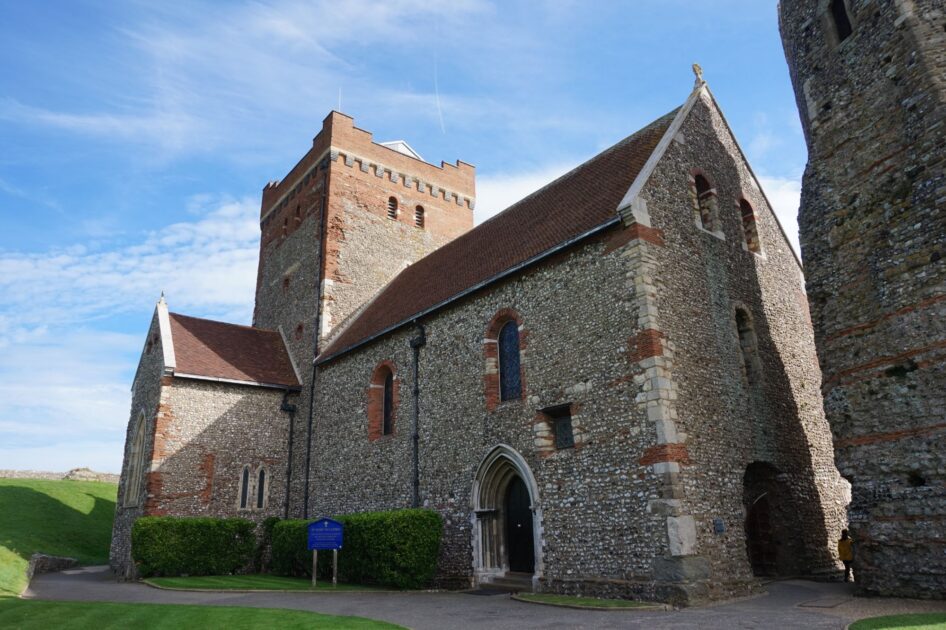
Discover the remnants of an Anglo-Saxon church, St. Mary in Castro, and explore the Saxon Earthworks, remnants of an ancient defensive structure. These archaeological treasures provide insight into the early history of Dover Castle, highlighting its evolution through different eras. The peaceful surroundings of the church offer a stark contrast to the military might that later defined the castle.
Constable’s Gate
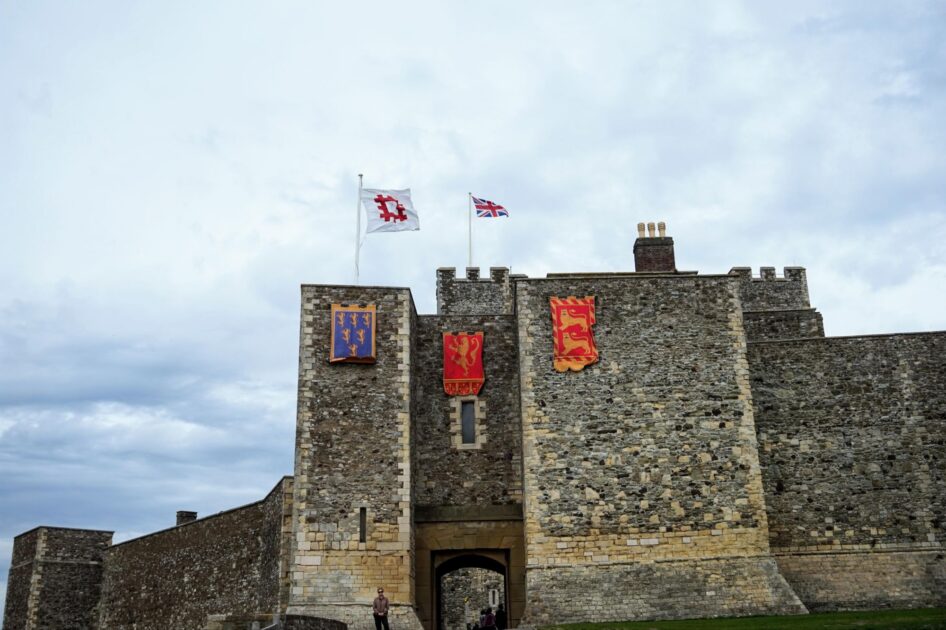
Pass through the imposing Constable’s Gate, a remarkable example of medieval defensive architecture. This gatehouse served as the main entrance to the castle, and its formidable design reflects the military prowess of the time. Admire the strategic elements, including drawbridges and portcullises, that once safeguarded the fortress against potential invaders.
Breathtaking Views from the Walls
Take a leisurely stroll along the castle walls, offering breathtaking panoramic views of the surrounding landscape. The strategic location of Dover Castle provides unparalleled vistas of the English Channel, the White Cliffs, and the picturesque countryside. The sweeping scenery provides a serene backdrop, contrasting the castle’s historic military significance.
Castle Gardens and Grounds
Conclude your visit by exploring the beautifully landscaped Castle Gardens. Immerse yourself in the tranquil surroundings, featuring vibrant flowers, lush greenery, and historical features. The gardens provide a peaceful retreat and a perfect opportunity to reflect on the rich history and architectural splendour of Dover Castle.
Practical information for visiting Dover Castle
Address: Castle Hill, Dover, Kent, CT16 1HU
Website: https://www.english-heritage.org.uk/visit/places/dover-castle
While you’re visiting Dover Castle, consider taking a stroll at nearby Samphire Hoe and see a Grade II listed lighthouse!
Certainly, Timothy — here’s a structured and tourist-friendly guide to Dover Castle, styled to match your Bateman’s and Bodiam Castle sections. It covers everything from tours and events to accessibility and nearby places to eat:
- Tours: Dover Castle offers self-guided access across the site, plus timed entry to the Secret Wartime Tunnels and Underground Hospital. Guided tours are available for these areas and include immersive sound and light experiences. Booking ahead is recommended during peak times.
- Events: Seasonal highlights include Operation Dynamo: Rescue from Dunkirk, medieval reenactments, family trails, and summer theatre. The new Dover Castle Under Siege exhibition explores the 1216–17 siege that nearly changed the English throne.
- Café:
- NAAFI Restaurant: Hot meals, sandwiches, cakes, and drinks in a historic military building.
- Great Tower Café: Light lunches and coffee inside the medieval walls.
- Ice Cream Parlour & Vintage H Van: Open seasonally for snacks and drinks.
- Wartime Tunnels Tearoom: Small café with themed treats like Jam Thumbprint Scones.
- Places to Eat Nearby:
- Cullins Yard: Converted shipyard restaurant with seafood and vegetarian options.
- Il Rustico: Italian dishes and pizza near Bench Street.
- Dino’s Italian Restaurant: Family-run with pasta and veal specials.
- Marine Court Table Table: British pub-style meals on Marine Parade.
- The Dovorian: Casual café with breakfast and lunch options.
- La Salle Verte: Coffee shop with vegetarian snacks and cakes.
- Where to Visit Before or After:
- White Cliffs of Dover: Iconic coastal walks and views across the Channel.
- Deal Castle & Walmer Castle: Nearby English Heritage sites with Tudor history.
- Richborough Roman Fort: Roman ruins near Sandwich.
- Canterbury Cathedral: UNESCO World Heritage site with medieval architecture.
- Samphire Hoe: Nature reserve built from Channel Tunnel spoil.
- Cost / Entry Fee:
- Adult: £30.00 (on the day), £27.20 (advance)
- Child (5–17): £19.00 (on the day), £17.20 (advance)
- Concession: £26.00 (on the day), £23.60 (advance)
- Family: Special rates available
- Under 5s: Free
- English Heritage members: Free entry
- Opening Times:
- Daily: 10:00–17:00
- Last admission: 16:00
- Opening hours may vary seasonally
- How Long to Visit: Allow 3–4 hours to explore the Great Tower, tunnels, exhibitions, and grounds
- Parking:
- Free for English Heritage members
- On-site parking for up to 200 cars
- Overflow parking at Broadlees (CT16 1HW) during peak times
- By Train:
- Nearest station: Dover Priory (approx. 1 mile uphill walk)
- Taxis recommended from station for easier access
- Accessibility:
- Wheelchair access to most outdoor areas, ground floors, and exhibitions
- Mobility scooters available for tunnel tours (advance booking advised)
- Accessible toilets, induction loops, sensory backpacks, and rest areas
- Some steep slopes and spiral staircases in historic areas
- Dog Friendly:
- Dogs on leads welcome in outdoor grounds
- Assistance dogs only inside buildings and cafés
- Water bowls and dog bins available throughout the site
Looking for more Fun Things To Do In Kent? See my guide for families and adults.
More guides on Kent
- Where Are The Oldest Castles In Kent?
- Brilliant Things To See, Do And Eat In Folkestone
- Best Things To See, Do & Eat In Faversham
- A Guide To Kent’s Sandy Beaches (And What To See And Do Afterwards)
- Best Coastal Towns In Kent
- 48 Hours In Margate – Fun & Unique Things To Do
- In Photos: Why Dungeness Is Worth Visiting – Things To Do & History
- In Photos: A Walk Around Samphire Hoe Country Park & Beach
- A Day Trip to Deal, Kent
- Best Places To Eat And Shop in Broadstairs
- Visit Edenbridge: Ultimate Guide To Things To Do




